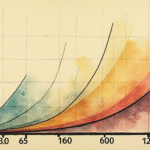Introduction
The International Labour Organization (ILO) has warned that the new tariff scheme implemented by President Donald Trump’s administration puts 84 million jobs worldwide at risk, with Mexico and Canada being the most affected. The trade tensions could result in more precarious jobs and reduced stability.
The Impact on Mexico and Canada
According to the ILO, one in six jobs in Mexico and Canada depends on trade with the United States, affecting 13.3 million people. The recent shift in trade dynamics has increased uncertainty around global demand, particularly for workers whose jobs depend on US consumption and investment.
Proportionate Effects
Mexico and Canada are projected to be the most affected, with 17.1% of their labor force at risk (13.3 million people). The Asia-Pacific region follows with 2.9% (55.9 million), and Europe and Central Asia with 2.7% (10.1 million).
Potential Consequences
Experts from the ILO state that the final impact on employment will depend on how US import demand evolves, the effects of trade diversion, and labor displacement to other sectors. This last factor could deteriorate job quality, as trade-related sectors often provide better conditions for workers.
Global Economic Slowdown
The ILO has also revised its estimate for job growth downward from 1.7% to 1.5% in 2025, predicting the creation of 53 million jobs—7 million fewer than in the previous edition. This revision is due to a slower-than-expected global economic growth, with the ILO projecting 2.8% instead of 3.2%.
Key Questions and Answers
- What is the main concern raised by the ILO? The ILO warns that President Trump’s tariffs threaten 84 million jobs worldwide, with Mexico and Canada being the most affected.
- How many jobs in Mexico and Canada are at risk? Approximately 13.3 million jobs in Mexico and Canada are at risk due to the new tariff scheme.
- Which regions are expected to be most affected? Mexico and Canada are projected to be the most affected, with 17.1% of their labor force at risk, followed by the Asia-Pacific region (2.9%) and Europe and Central Asia (2.7%).
- What factors will determine the final impact on employment? The final impact will depend on changes in US import demand, trade diversion effects, and labor displacement to other sectors. This could potentially deteriorate job quality.
- How has the ILO adjusted its global economic growth projection? The ILO has revised its global economic growth projection downward from 3.2% to 2.8%.






